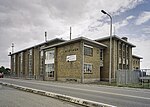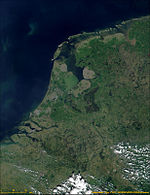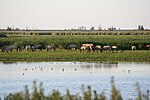Exposure (sculpture)
2010 sculpturesCommons category link is the pagenameOutdoor sculptures in the NetherlandsSculptures by Antony GormleySculptures in Amsterdam ... and 3 more
Sculptures of menSteel sculptures in the NetherlandsTourist attractions in the Netherlands

Exposure (Exposure) is a steel frame sculpture on the Markerstrekdam near the Houtribsluizen in Lelystad Netherlands by artist Antony Gormley. The work is also known as Crouching man (Squatting man), or popularly called the Shitting Man.
Excerpt from the Wikipedia article Exposure (sculpture) (License: CC BY-SA 3.0, Authors, Images).Exposure (sculpture)
Markerstrekdam, Lelystad
Geographical coordinates (GPS) Address Nearby Places Show on map
Geographical coordinates (GPS)
| Latitude | Longitude |
|---|---|
| N 52.521916666667 ° | E 5.4253055555556 ° |
Address
Markerstrekdam
Markerstrekdam
8242 PR Lelystad
Flevoland, Netherlands
Open on Google Maps











